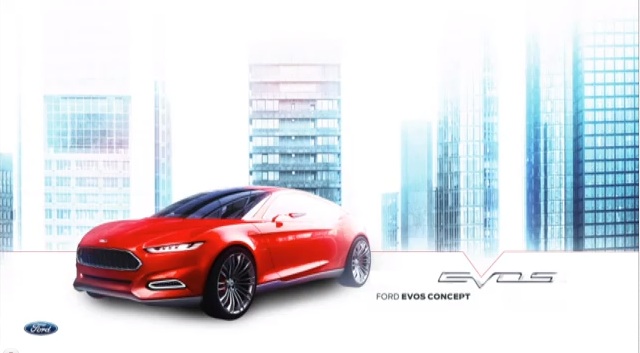Some of the speakers at today’s Techonomy Detroit conference talked about how entrepreneurship and technology can help Detroit diversify its economy beyond automobile manufacturing. But that doesn’t mean we have to give up on the car companies.
Ford, for example, seems to be in the middle of a reinvention. At the conference, I had a chance to interview Paul Mascarenas, the company’s CTO and vice president of research and innovation, about Ford’s vision for the car of the future — a vision includes some pretty dramatic changes.
Mascarenas distinguished between the near-term (the next five years), the mid-term (5-10 years from now), and the long-term (10-15 years and beyond) future. In the near-term, he said Ford vehicles will look more-or-less the same, but they’re going to be more fuel efficient and increasingly electric. We’re also going to see more driver assistance features that try to improve safety.
In the mid-term, we’ll start to see new interfaces for cars, and those cars are going to be more connected to the online cloud. Driver assistance and automation will continue to evolve as well.
On that last point, Mascarenas said Google’s experiments with driver-less cars are “fantastic in terms of the technology,” but he suggested that completely driver-less vehicles are still “a long way out.” Instead, what we’ll see are features that move in this direction. As examples, he pointed to technologies that Ford has already developed, like cameras that keep cars in their lane, radar systems that help avoid crashes, and automated parking assistance.
In the long-term, Ford is looking beyond selling cars, at least in the traditional sense. To be clear, Mascarenas said that auto manufacturing will be a “very, very healthy business” for “many, many, many years.” However, if you look at the next generation of potential car owners, many of them are in the urban areas of emerging markets, which may not have the infrastructure to support a flood of new traffic — borrowing a phrase from executive chairman Bill Ford, Mascarenas said this could lead to “global gridlock”.
So what can Ford do in that future? Well, it might get more involved in shared ownership models like Zipcar. In fact, it announced a partnership with Zipcar last year. It could also offer “end-to-end service” for “multi-modal transportation” — in other words, helping customers stitch together routes that includes bicycles, walking, cars, and whatever else. And Ford might also develop a “true urban vehicle,” Mascaneras said, something that’s smaller and easier to park.
Join 10k+ tech and VC leaders for growth and connections at Disrupt 2025
Netflix, Box, a16z, ElevenLabs, Wayve, Hugging Face, Elad Gil, Vinod Khosla — just some of the 250+ heavy hitters leading 200+ sessions designed to deliver the insights that fuel startup growth and sharpen your edge. Don’t miss the 20th anniversary of TechCrunch, and a chance to learn from the top voices in tech. Grab your ticket before doors open to save up to $444.
Join 10k+ tech and VC leaders for growth and connections at Disrupt 2025
Netflix, Box, a16z, ElevenLabs, Wayve, Hugging Face, Elad Gil, Vinod Khosla — just some of the 250+ heavy hitters leading 200+ sessions designed to deliver the insights that fuel startup growth and sharpen your edge. Don’t miss a chance to learn from the top voices in tech. Grab your ticket before doors open to save up to $444.
To illustrate many of Ford’s ideas for the car of the future, the company also created a concept vehicle called the Evos, which is the star of the video embedded below. And Ford recently opened a Silicon Valley lab, which Mascarenas said is meant to be “slightly outside the traditional Ford infrastructure,” where it can connect with startups and tap into big data trends.
[youtube http://www.youtube.com/watch?v=WyBO32jz7Vg]


